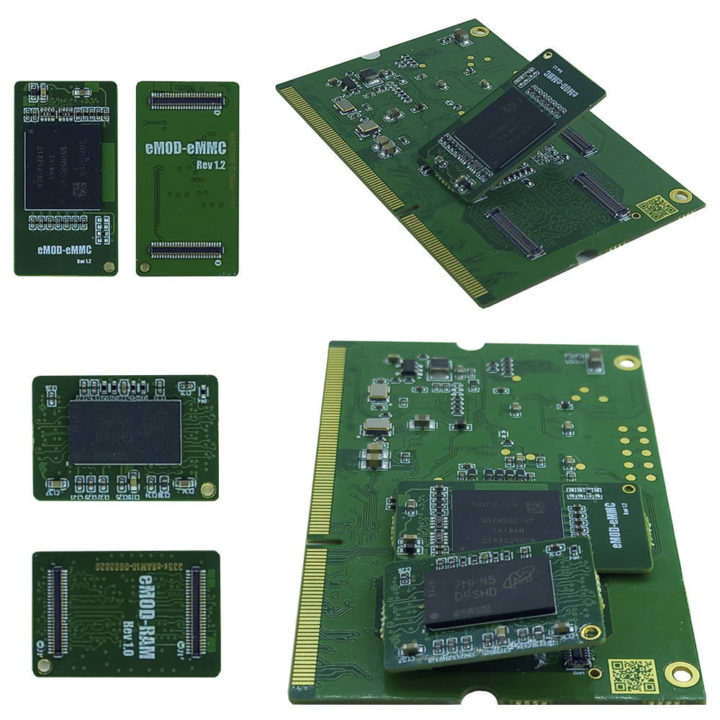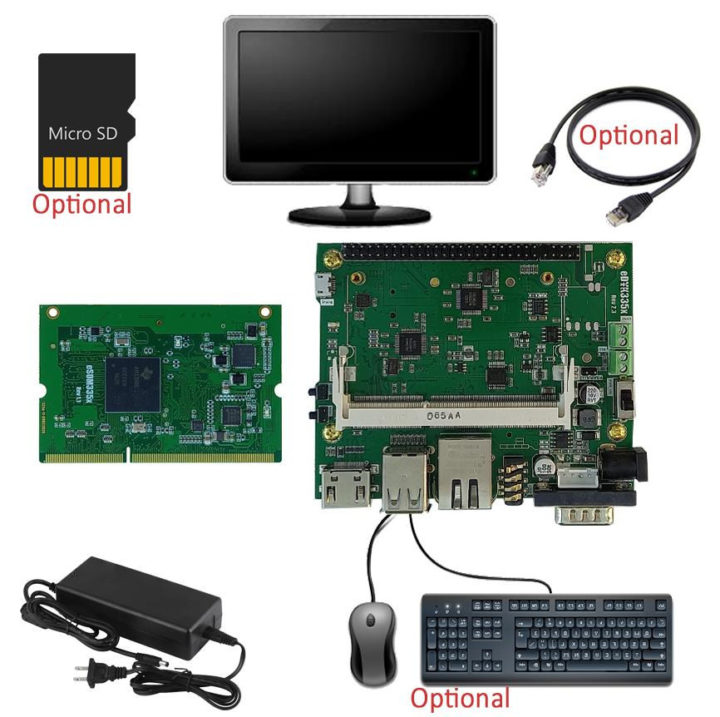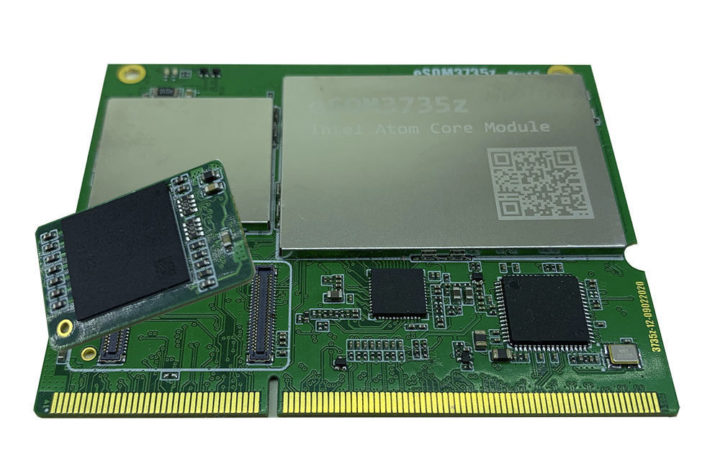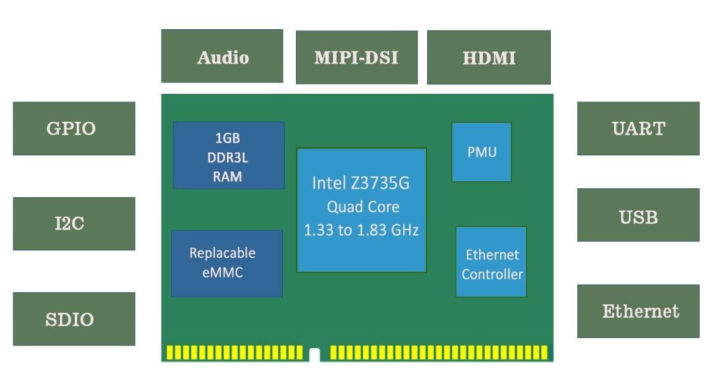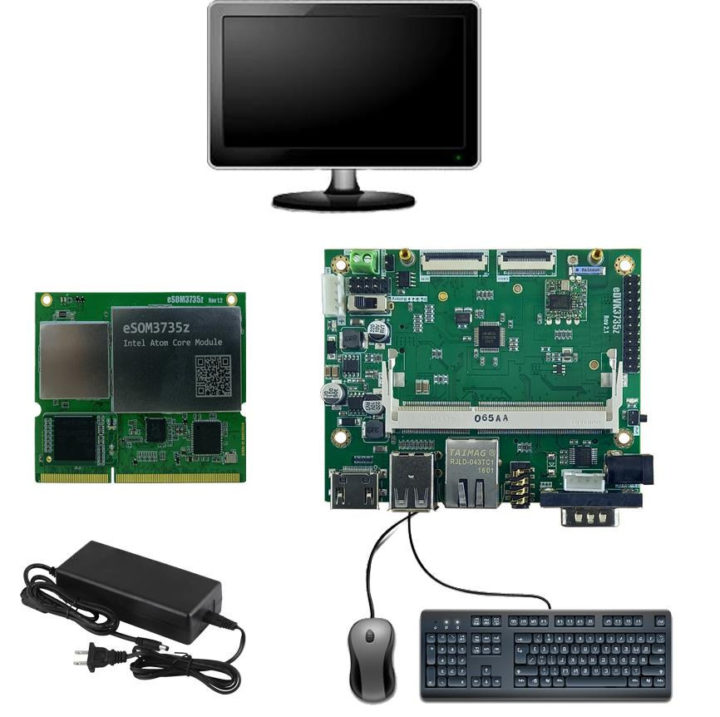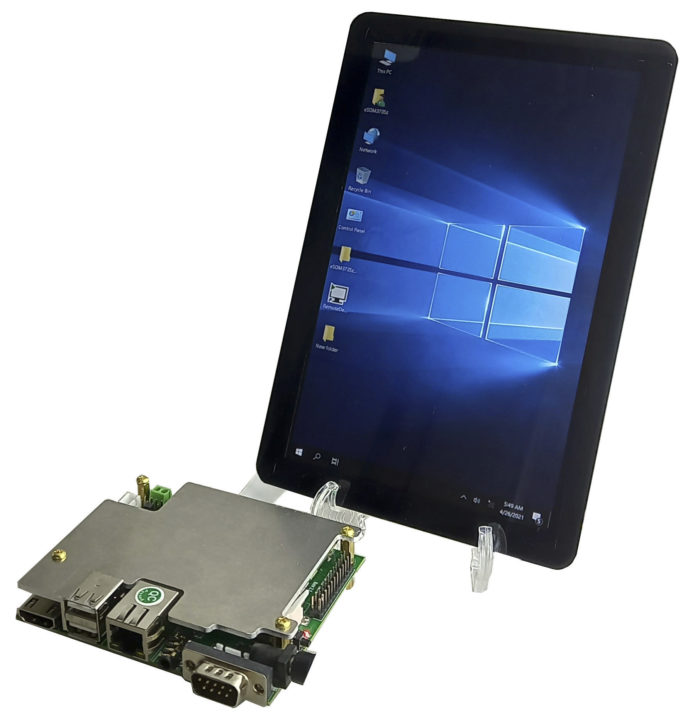It’s been a long time since I’ve written about a Windows CE (WinCE) compatible module, but apparently, those are still being developed with China-based UNERON offering eSOM335x Windows CE system-on-module based on Texas Instruments AM335x Arm Cortex-A8 processor, and eSOM3735z Windows 10 module equipped with an Intel Atom Z3735G processor.
What’s even more intriguing is that the company relies on replaceable & upgradable eMMC flash and RAM modules for the Arm SoM, and while the 1GB RAM is soldered on the Intel module, it’s still possible to upgrade the eMMC flash that way. We’ve seen eMMC modules on several single board computers in the past including ODROID-C4 or Renegade SBC, but I think it’s the first time I see this option on a system-on-module.
UNERON eSOM335x AM335x system-on-module
Specifications:
- SoC – Texas Instrumentx Sitara AM3358BZCZA100 Arm Cortex-A8 up to 1GHz with PowerVR SGX530 3D GPU (optional AM3359, AM3354, or AM3352)
- System Memory – 128MB, 256MB, 512MB, or 1024MB DDR3L 16-bit RAM via replaceable module
- Storage – 2GB, 4GB, 8GB, 16GB or 32GB eMMC 4.3 flash via replaceable
- 204-pin SO-DIMM connector
- Storage – SD card
- Display – 24-bit Parallel Data Output up to 2048×2048 (Tested with 1024 x 768 display)
- Audio
- Headphone (stereo), MIC (Mono)
- Stereo LineOut but not implemented on OS
- Stero LineIn but not implemented on OS
- Networking – Up to 2x Gigabit Ethernet ports
- USB – 2x USB host port (optional dual OTG function)
- Other peripherals
- 5x UART (Rx,Tx)
- Up to 2x SPI, up to 3x SPI
- Up to 2x CAN bus
- 8x 12-bit Analog Inputs
- 17x GPIO by default, up to 77 with a different processor (AM3359)
- Supply Voltage – 5V DC up to 700mA (Max)
- Dimensions – 67.6 x 44.0 x 5.6 mm
- Temperature Range – 20 to +80°C
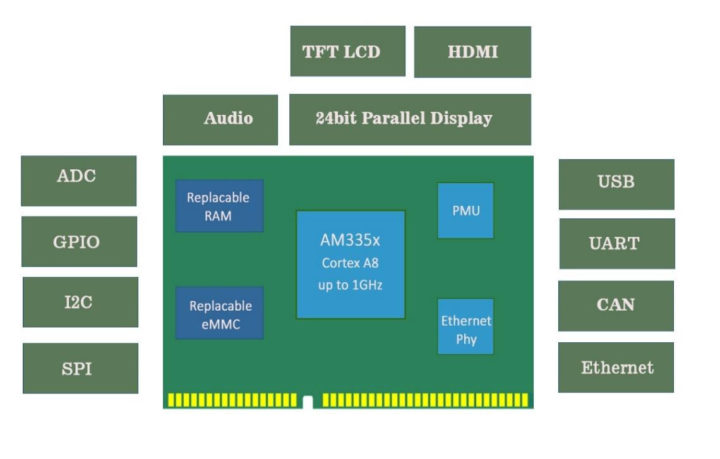
UNERON eSOM3735z SoM
The Intel system-on-module has the same form factor, but only the eMMC flash module is replaceable.
- SOC – Intel Atom Z3735G quad-core processor @ 1.33 to 1.83 GHz with 2MB cache, Intel HD graphics
- System Memory – 1GB DDR3L RAM soldered on the module
- Storage – 8, 16, 32GB or 64GB eMMC 4.5 flash via replaceable module
- 204-pin SO-DIMM connector with
- Storage – SD card
- Display – MIPI DSI and HDMI 1.4 up to 1920×1080 resolution
- Camera – Optional dual MIPI-CSI for up to 8MP rear camera, 0.3MP front-facing camera
- Audio – Headset, MIC (Mono), and LineOut(Stereo)
- Networking – 10/100M Ethenret
- USB – 4x USB host interfaces over USB hub
- Other I/Os – 3x UART, up to 4x I2C, up to 25x GPIOs
- Supply Voltage – 3.7 to 4.2V DC up to 1.5A
- Dimensions – 67.6 x 44.0 x 5.6 mm
- Temperature Range – 20 to +80°C
The module runs Windows 10 32-bit by default, but the company also mentions custom support for “EFI Installer OS”, which probably just means any operating system that can install through UEFI. Note that we’ve seen in the past getting all features (e.g. HDMI audio) to work with Linux on Intel Atom Z-series “Bay Trail” hardware could be challenging, although I believe most issues may have been fixed, or at least workarounds are known. Again hardware, drivers, and software resources can be found on a Google Drive folder.
Just like for the Arm module, there’s a development kit with carrier board, power supply, optional display.
Availability and pricing
UNERON Arm/Intel Windows modules and development kits are available for pre-order now. eSOM335x can be found for $62 with a 512MB RAM module and 8GB eMMC flash module, while eSOM3735z system-on-module goes for $77 with a 32GB eMMC flash module. There are options to select either RAM or eMMC flash modules with different capacity, but it’s not working for me at this time. You’ll also find the eSOM335x devkit and various displays, as well as eSOM3735z development kit and the $150 ” development package” with an 8-inch display on the company’s website.

Jean-Luc started CNX Software in 2010 as a part-time endeavor, before quitting his job as a software engineering manager, and starting to write daily news, and reviews full time later in 2011.
Support CNX Software! Donate via cryptocurrencies, become a Patron on Patreon, or purchase goods on Amazon or Aliexpress


